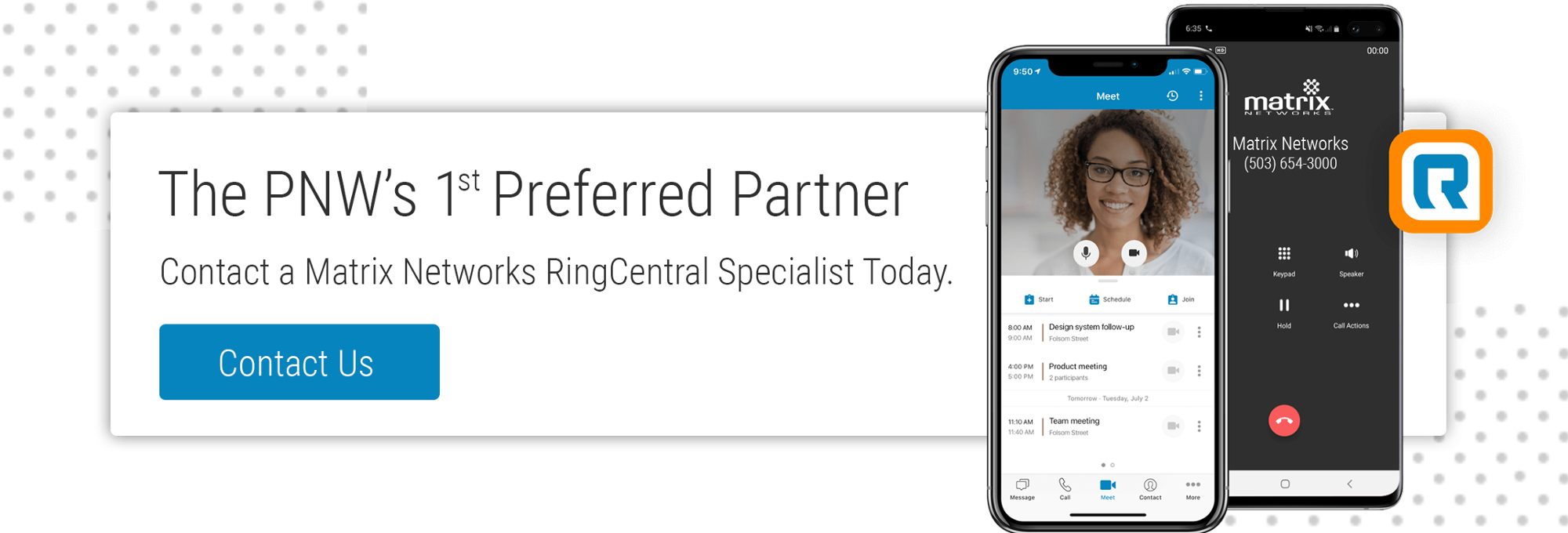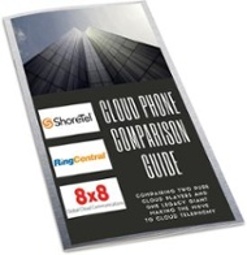
If you have ever reviewed a phone bill you know it is written in a language that resembles Elvish rather than English. As the world transitions to phone systems offered as a service in the cloud, these bills and the corresponding pricing models will only become more complex and convoluted. As we evaluate any cloud solution, we are considering committing to paying monthly for a term typically one to three years in length. Small misunderstandings or oversights on pricing can have drastic effects on the long term cost of the solution.
I have a friend who signed up for a cloud service that was supposed to cost her $20 a month, but hidden in the legalese was a monthly “recovery fee” of 5% of billing. This small detail ended up adding another $1 per user per month, which sounds small potatoes, until you multiply that by the length of the contract (36 months) and the number of users (200). Suddenly that hidden dollar per user ended up costing her $7,200 across the 36-month contract. These hidden costs are common in cloud contracts, and in this article we will help you navigate the hidden charges related to Unified Communications as a Service (Cloud Phone).
Types of Cloud Phone Models
Unlimited Model
The price of cloud phone solutions is typically broken into two models, a usage based or an unlimited model. Unlimited plans typically include free calling inbound and outbound in the coverage areas offered by the provider. Typically, these unlimited plans include coverage areas such as the United States, Canada, and Mexico, the regions where the service provider offers a POP (point of presence). Calls outside these areas incur International Long Distance charges, so if your business makes International calls, we highly advise you to review the per minute pricing for calls to the regions you communicate with most frequently. These per minute costs can be disproportionately high when compared to traditional carriers. Although some services offer a bundle of free Toll-Free Inbound minutes with your user licensing, once exceeded, all Toll-Free calls are metered and also can be billed at an excessively high rate. Some companies allow you to buy a bundle of International Long Distance or Toll-Free minutes at a reduced rate, and you lose what you don’t use. With careful analysis and help from an expert, this cost can be predicted and accounted for in your evaluation of cloud providers.
Metered Model
The second model used is a metered service offered in one of two flavors. The most common offering would be unlimited inbound calls, while all outbound calls are metered, including local calls at a very low rate. The cost per seat on these models tends to be much lower, but the costs add up quickly if you have active phone users. It is important to understand when billing begins on these plans. For example, some plans will bill all calls outbound, others will only bill long distance calls made outbound. The second flavor of metered billing is a measurement of concurrent calls. In this methodology you pay for a certain number of concurrent paths. The pricing per user is typically low on these concurrent path plans, and the per minute charges are more typically aligned with industry averages. This type of plan is the ultimate pay for what you eat model, with usage charges on everything, but a low commit price.
Hidden Pricing in Hosted VoiP
Commit Levels
When evaluating either metered or unlimited plans you must take into account the seasonality of your business. Commit levels are a common term in the cloud industry. Some commit levels require you to reach the set value (minimum seats or billing) within a specific period of time or billing at the level begins regardless of usage. Certain models allow companies to set a commit level and vary a specific percentage, typically 20%-50%, from that commit level at no penalty. This allows businesses to scale up and down depending on their specific needs by time of year instead of making a commitment to the largest possible usage category. The other critical piece of commit is when the billing must start. To understand the cost of your new Cloud Phone deployment, you must ask when billing will begin and for what. Some of the largest players begin billing the day you sign, regardless of usability.
Feature vs Bundled Pricing
One thing is certain when it comes to the modern Cloud Phone platforms, there are more features than any human could possibly learn and use. Identifying the important features will be a critical part of your selection process. If you haven’t yet started that process or want some guidance, download our UC Evaluation Cheat Sheet here. Most service providers offer bundled features; the lowest cost user profile contains only basic features for a lobby or common area, with the most expensive profile packages being contact center agents and supervisors. These bundles force you into buying features you may not use, but often the bundled price is much less expensive than adding each feature individually. Each provider bundles their products differently; you must dig into the bundled price to understand what is included for each user. It is typical to see a feature in a demo only to discover later that the feature is only included in the bundle that is out of your price range. One other variable that can come into play for those on bundled plans, some providers require you to choose one bundle level for all users. If a small group of users need call recording, it may force the entire organization to go for a more expensive bundle. Rarer and rarer is the feature pricing model, allowing clients to choose the specific features that their users want and need. This model gives clients the flexibility to choose only the features that matter to their team.
Connectivity
A sometimes unexpected cost of a Cloud Phone deployment is the Internet connectivity. The options for connectivity can be split into three groups, each with technical advantages and disadvantages. For the purpose of this article I am going to focus on how these are priced and not on their viability as a solution. Feel free to learn more about the pros and cons of different types of connectivity in our whitepaper. Over the top connectivity usually depends on your primary Internet circuit or a secondary dedicated public Internet circuit and the open Internet. This model is typically very inexpensive, either using what is existing or adding an inexpensive secondary circuit. The second option is a dedicated private line circuit connected directly to the provider ensuring QoS efforts are respected. This is the most expensive option and can reduce the financial viability of a project. With some providers an existing MPLS network is in place where a connection of their broader network offers this connectivity. In this design, the cost of the drop-off to your facility is your responsibility; the other model requires you to provide both ends of the connection, which can become exorbitant quickly. Some providers charge a usage fee for this service as well. If you plan to go down this path, a hard look at the provider's model and costing will be required. The third option, SD-WAN, is growing in popularity quickly, addressing the larger concern about QoS while using public Internet for connectivity. This solution is priced between the previous two models and can provide added value of intelligent routing and failover for other applications. As you evaluate the pricing plans for your UC product, don’t let this option slip through the cracks; it can account for as much as 30% of the monthly expense.
Fees and Taxes
Two things in life are certain, death and taxes. In the case of Hosted UC, taxes are typically hidden when discussing the cost of a solution. Some providers will include pricing on their quotes to prospective clients, but most leave that for an unpleasant surprise post install. These taxes are required, so you are stuck for the term of the contract. For a breakdown on the various taxes, the FCC has a nice rundown. Taxes and fees vary based on the products, the way they are packaged, usage, and the area where you do business. The added costs are usually between 15%-25% of the total billing. Most organizations will provide you an estimate upon request. This is critical to understanding the true price of your cloud phone solution.
How to (Potentially) Save Costs Associated with Cloud Phone Deployments
As you transition to the Cloud Phone model you are able to relieve yourself from a few costs. Traditional voice systems require a connection to the PSTN (Public Switching Telephone Network). This is typically provided by a carrier like CenturyLink, Level 3, or Comcast in the form of copper lines, PRIs, and T1s. All your current voice services will no longer be necessary in the new model. The other costs avoided in the new model are maintenance contracts, support call charges, and equipment replacement. Nearly every Cloud Phone model includes the cost of maintenance and support, and the equipment is owned by the provider, ensuring that they are responsible for upkeep (unless phones are purchased). Keep in mind, you may have current contracts with existing providers for the support and delivery of your support services. This can help to prevent paying for services you will not use.
The Takeaway
Cloud products can be riddled with hidden charges. This holds true for Cloud Phone products, requiring us to look closely at the topics discussed in this article. By reviewing the pricing closely and asking the hard questions of your trusted advisor, you can predict the costs of these services and negotiate the best possible rate. Understanding your call volume, need for features, and preference for connectivity will help you establish the best pricing model for your organization. If you are a seasonal business you might select a flexible commit plan with metered trunks, while a steadier phone-oriented business will opt for an unlimited, full featured plan. It is critical that you do your homework on the features that are vital for your business. If the bundled plan you like does not include one of the features, it is common for companies to offer the service at a nominal monthly cost per user upon request. The presence of a trusted advisor or consultant can be helpful through each stage of the process. Make sure your partner is experienced in cloud voice deployments, has multiple offerings, and can assist with the network component. Matrix Networks is here to help you on your path towards a new UC experience, if you need to evaluate pricing, features, deployment or support we are here to help. Please let us know how!
Author: Kyle Holmes



.svg%20(1).png?width=55&name=1200px-Logo_of_YouTube_(2015-2017).svg%20(1).png)

